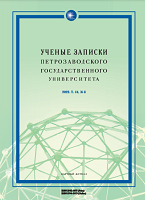РУБЯЩИЕ ОРУДИЯ РУССКО-КАРЕЛЬСКОГО ТИПА В КАРЕЛИИ И СЕВЕРО-ВОСТОЧНОЙ ЕВРОПЕ: ГЕОХИМИЧЕСКИЙ АСПЕКТ
CHOPPING TOOLS OF THE RUSSIAN KARELIAN TYPE IN KARELIA AND NORTH-EASTERN EUROPE: GEOCHEMICAL ASPECT
Author(s): Alexey Yurievich Tarasov, Irina Mihailovna SummanenSubject(s): Archaeology, Local History / Microhistory, Ancient World, Social development, Prehistory
Published by: Петрозаводский государственный университет
Keywords: lithic industry; chopping tools; Eneolithic; Neolithic; Karelia; Estonia; Finland; geochemistry; ICP-MS; raw materials; exchange;
Summary/Abstract: The paper presents the results of a geochemical investigation of the raw material for making stone chopping tools of the so-called Russian Karelian type, which were actively used for exchange interactions between the peoples of the North-Eastern Europe in the IV–III millennia calBC. The study is based on the ICP-MS analyses of 54 samples from different regions of Karelia, Finland, and Estonia conducted in the analytical laboratory of the Karelian Research Centre of the Russian Academy of Sciences. The investigation was aimed at confirming the proposition suggested in the early XX century that these tools were produced in one production centre on the western shore of Lake Onega (the outfall of the Shuya River) and spread by exchange. For this, the authors used the modern geochemistry methods, which greatly reduce the influence of the subjective human factor. The samples that were found at great distances from the known workshops, including those found outside Karelia, were analyzed for the first time. The new data generally confirm the idea that all certain tools of the Russian Karelian type, regardless of their discovery place, originate from the Shuya centre, and the raw material for this centre was taken from the volcanic greenstone rocks (“metatuff”) deposits that can be found in the vicinity. The study is well in line with the investigations of the organization of the prehistoric exchange in the North-Eastern Europe which are actively being carried out nowadays.
Journal: Ученые записки Петрозаводского государственного университета
- Issue Year: 44/2022
- Issue No: 8
- Page Range: 8-19
- Page Count: 12
- Language: Russian

